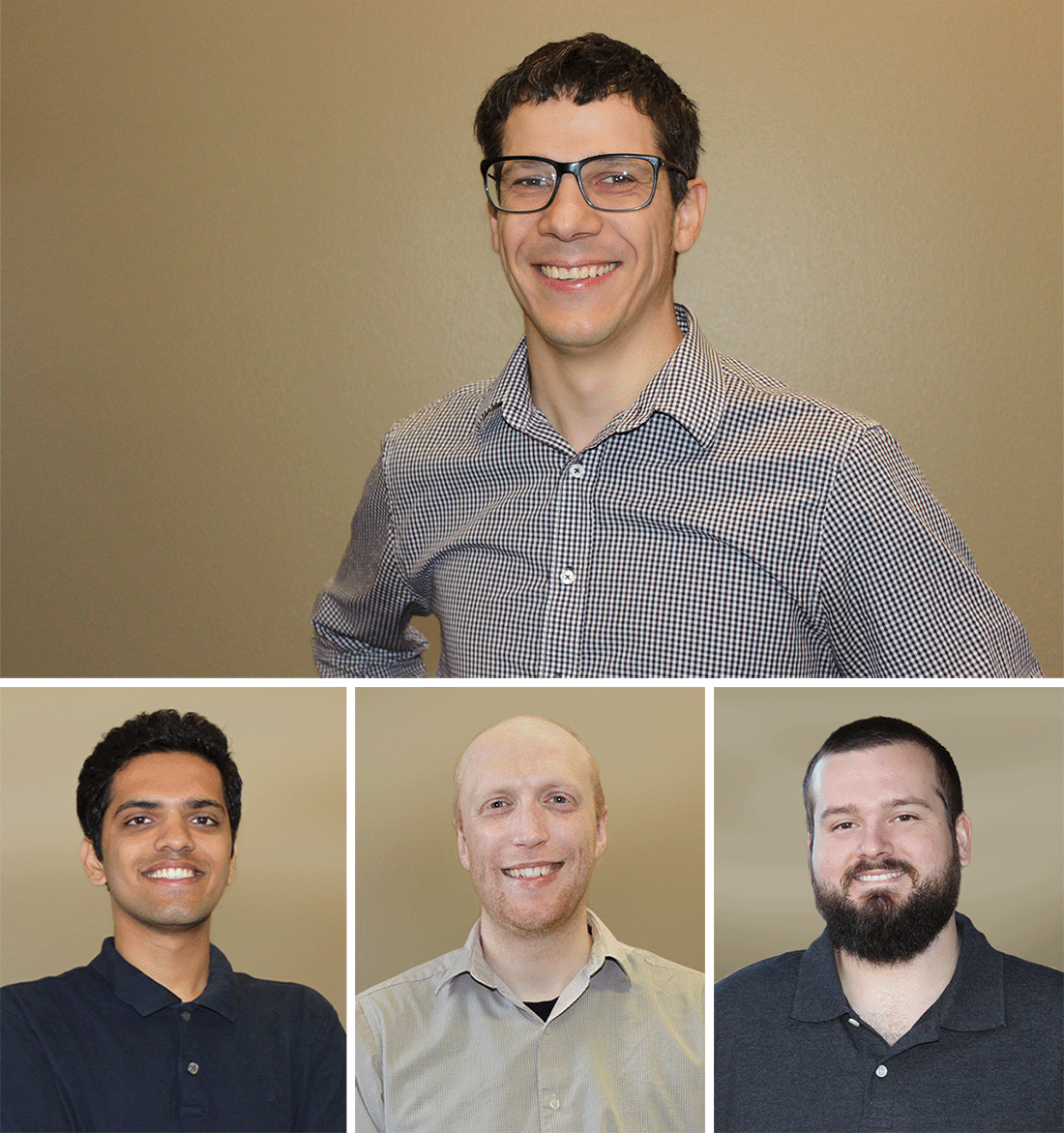Grad Students Present Research at Astrophysics Conference in Belgium

Texas Tech University astrophysics assistant professor Thomas Kupfer (top) took astrophysics graduate students Kunal Deshmukh, Eric Stringer and Corey Bradshaw (bottom, left to right) to the International Conference on Hot Subdwarfs and Related Objects in Liège, Belgium, where they presented their research.
7.28.2022
Corey Bradshaw, Kunal Deshmukh and Eric Stringer—all graduate students in the Department of Physics & Astronomy—gave presentations on their research while attending the 10th International Conference on Hot Subdwarfs and Related Objects, held June 13-17 in Liège, Belgium.
Their faculty mentor, assistant professor Thomas Kupfer, said the results of their work will be published in the conference's peer-reviewed and referenced Bulletin de la Société Royale des Sciences de Liège.
“This news is once again another good example of the excellence of research conducted by our students and their success at the international level,” said Sung-Won Lee, professor and department chair. The students' travel expenses were funded, in part, by the department and by the TTU Graduate School.
Kupfer described hot subdwarf stars as having about half the mass of our sun and radii between 10% to 30% of our sun's radius. He went on to say that hot subdwarfs have been studied extensively because they are important to many subfields in astrophysics.
“Pulsating hot subdwarfs are an ideal tool to study the interior structure and evolution of these stars, and they account for the ultraviolet excess observed in early-type galaxies,” Kupfer explained. “Hot subdwarf stars in close binaries are important progenitors for type Ia supernova progenitors crucial to cosmology and the expansion history of the universe. Substellar companions like brown dwarfs and planets around hot subdwarfs have been discovered as well.”
Bradshaw's conference presentation was entitled “Properties and evolutionary history of rare pulsating subdwarfs.” His research involves the follow-up and study of radial mode hot subdwarf pulsators.
“Although fewer than two dozen of these objects are known,” Kupfer said, “they are the ideal testbed to study and understand the structure and evolutionary history of hot subdwarf stars.”
Deshmukh's conference presentation was entitled “Detailed follow-up of the first accreting hot subdwarf binary candidate.” Stringer's conference presentation was entitled “Detailed follow-up studies of three ultra-compact sdB binaries.” Together, their research aims to pin down detailed properties—such as component masses—of the most compact hot subdwarf binaries with orbital periods of less than one hour.
“At such short periods these phenomena are ideal progenitor candidates for the thermonuclear explosion of the companion white dwarf through mass transfer from the hot subdwarf star, if the mass of the white dwarf is sufficiently high,” Kupfer said.
Kupfer's research lab has received support from the National Science Foundation (through grant AST #2107982), from NASA (through grant 80NSSC22K0338), and from the Space Telescope Science Institute (through grant HST-GO-16659.002-A).
College of Arts & Sciences
-
Address
Texas Tech University, Box 41034, Lubbock, TX 79409-1034 -
Phone
806.742.3831 -
Email
arts-and-sciences@ttu.edu
